In this article we provide homeschooling parents 7 tips for homeschool lesson planning. Our free lesson plan templates aim to help save time.

Planning lessons for homeschooling can feel overwhelming, but with the right strategies, you can create a structured and engaging learning environment for your child.
Whether you’re a seasoned homeschooling parent or just starting out, effective lesson planning ensures that your child stays on track academically while leaving room for creativity and flexibility. In this article, we’ll share 7 practical tips for homeschool lesson planning that will help you stay organized, save time, and make learning enjoyable for both you and your child.
Click here or on the image below to access our free lesson plan checklist!
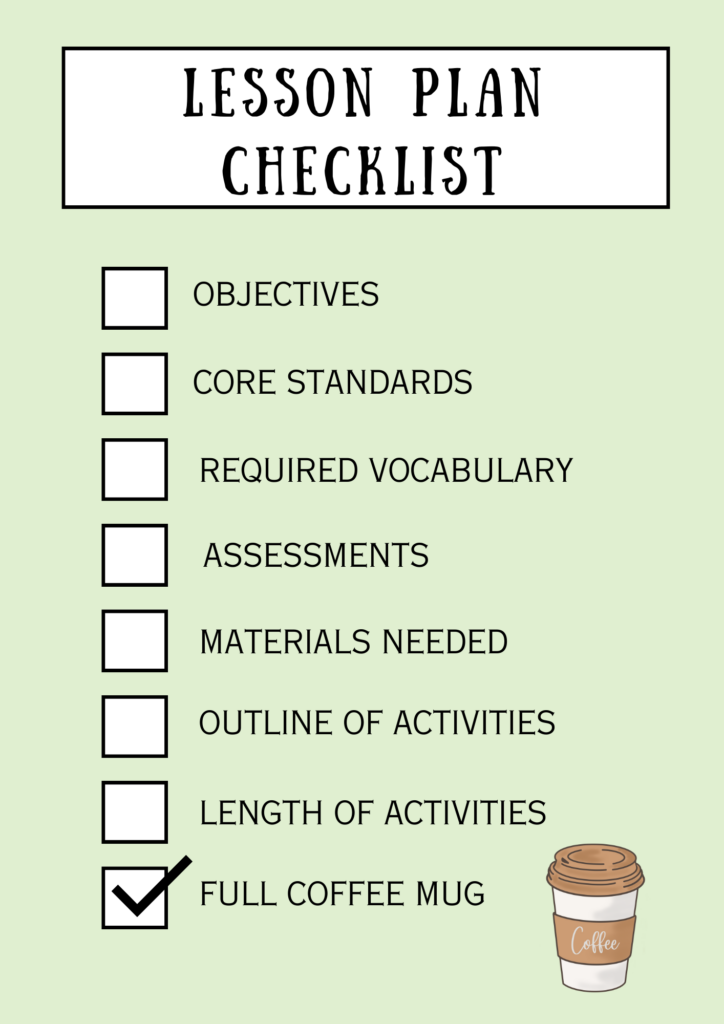
This checklist will help motivate homeschooling parents as teachers to work smarter when it comes to inspiring their children as students and bringing good energy into the classroom.
In saving time and energy when designing a lesson plan, parents should consider using this checklist as a way to establishing a routine in lesson planning.
Lesson planning is generally thought to see children as one homogenous group of leaners
While this may be considered as a starting benchmark, this could have implications to classroom management when those who fall above or below the class average may lose interest in the lesson and therefore disrupt the energy in the classroom.
Therefore, it is important that teachers consider methods of differentiation when it comes to having students remain interested in what they are learning.
Our Tools for Homeschool Lesson Planning
At EduKitchen, we offer a comprehensive set of tools designed specifically for homeschool lesson planning, making it easier for parents to create structured and engaging learning experiences. Our activity planner helps organize hands-on projects, experiments, and creative exercises that bring lessons to life.
These tools inlcude:
- Classroom Daily Agenda Template for All Grades
- Daily Teacher Agenda Template for All Grades
- Monthly Lesson Plan Chart Template for All Grades
- Daily Seating Chart Templates for All Grades
- First Day Semester Checklist for All Grades
- Classroom Management Rules Bundle
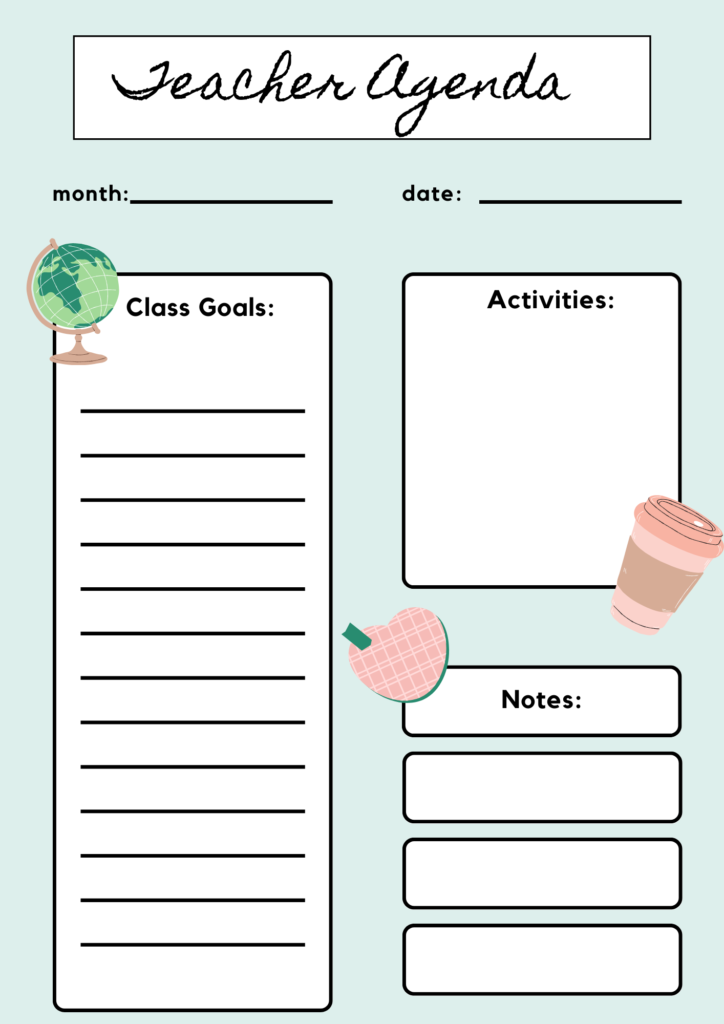
The lesson planner provides a clear framework to map out subjects, objectives, and daily schedules, ensuring a balanced and effective learning routine. For multi-child homeschool setups, our seating chart templates help parents create organized workspaces that support focus and productivity.
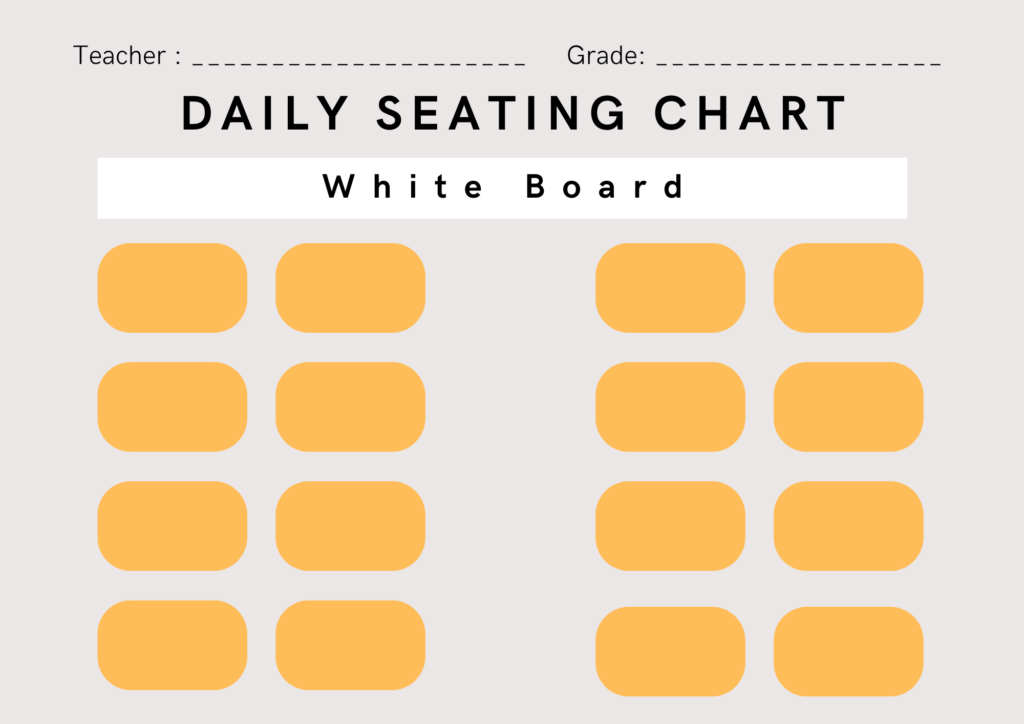
To start the homeschool year on the right foot, our first-day activity suggestion worksheet includes fun and meaningful icebreakers that set a positive tone for learning. With these tools, homeschooling parents can confidently plan lessons while fostering a dynamic and engaging learning environment.
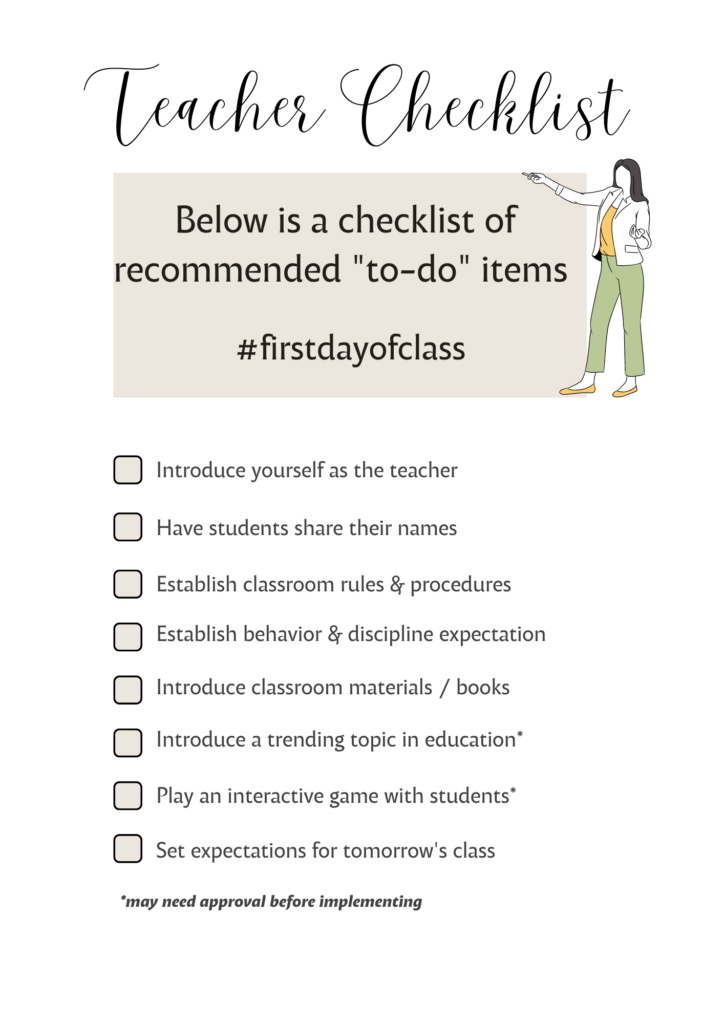
Amazon Tools for Homeschool Lesson Planning
This blog contains affiliate links to highlighted websites and/or resources. By clicking on the link and making a purchase we may earn a small commission at no extra cost to you. Click here for full disclosure.
Here are three Amazon tools that can simplify homeschool lesson planning and enhance your teaching experience:
1. PlanbookEDU Teacher Lesson Planner
- A versatile and customizable physical or digital planner designed specifically for educators. It allows homeschool parents to organize daily lessons, set goals, track progress, and schedule activities. Look for planners with subject-specific sections and goal-setting pages for maximum efficiency.
2. Dry Erase Calendar or Weekly Planner Board
- A dry-erase board with a calendar or weekly layout is perfect for visualizing your homeschool schedule. It lets you plan lessons, mark important dates, and easily adjust schedules as needed. Many options come with accessories like markers and magnets to keep your plans flexible and visible.
3. All-in-One Laminator and Supplies Set
- Laminators are invaluable for preserving teaching materials, creating reusable worksheets, or making durable flashcards. Pair it with a pack of laminating sheets to extend the life of your teaching aids and cut down on printing costs over time.
These tools can make homeschool lesson planning more organized and adaptable while keeping your resources effective and engaging.
Journal Your Homeschool Lesson Planning with Promptly Journals
Transform your homeschool lesson planning into a meaningful and reflective experience with Promptly Journals. Designed for busy parents and educators, these journals offer structured prompts to help you outline daily lessons, track student progress, and document milestones.

With space for creative brainstorming, reflections on what worked, and areas for improvement, Promptly Journals make planning an intentional and rewarding process. Their sleek design and practical layouts provide the perfect balance between organization and inspiration, ensuring your homeschool journey stays on track while fostering a deeper connection to your teaching goals.
Visit Promptly Journals Today!
Homschooling & Teacher Identities in the Classroom
Before we get into the details of our checklist on lesson planning, watch our video on the topic of teacher identities in the classroom, and how teachers can recognize challenges to their identities, and therefore build efficacy in the classroom.
For more information on teacher identity from EduKitchen, click here to read our article.
Building Energy In The Homeschool Classroom With Lesson Planning
Now this isn’t going to start a science lesson but energy is something important to talk about when it comes to lesson planning.
Energy as it relates to the classroom and through the medium of lesson planning is simple.
If a teacher presents a lesson plan full of exciting questions the engagement with students will be high and the class time will fly right by.
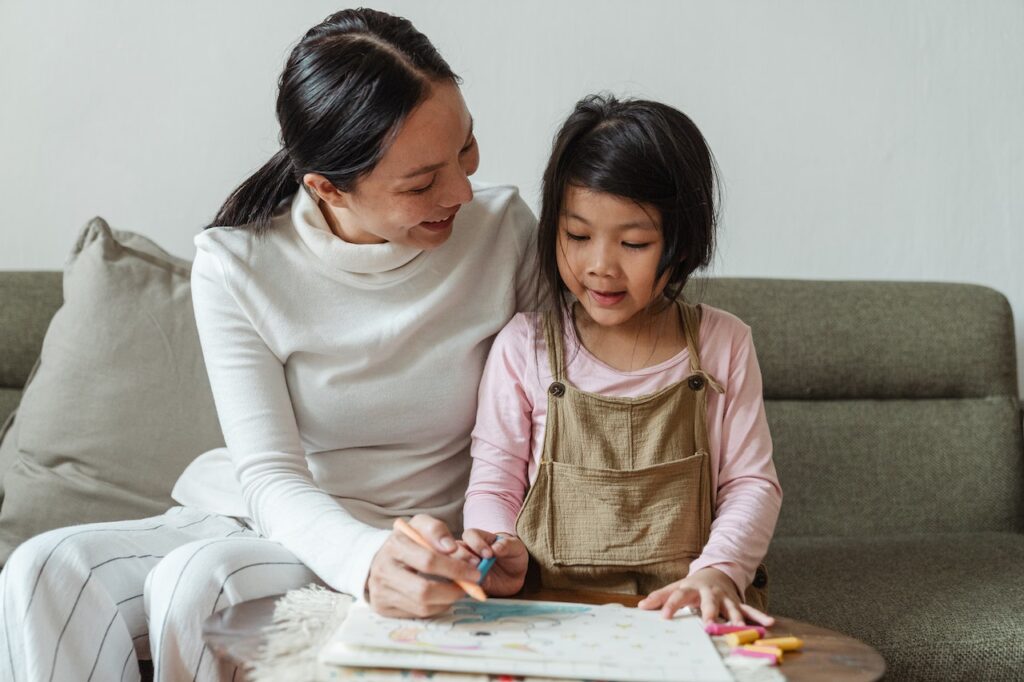
Now, again this doesn’t necessarily mean that to have energy in the classroom, students need to be “bouncing off” the walls.
It means that, even sitting in their seats, the teacher has the full attention of the students as seen by their level of excitement and eagerness to learn.
The Right Questions Bring The Right Energy
If a teacher does not consider the kinds of questions they ask in the classroom, by considering the response of students to the activities, or doesn’t plan for interesting dialogue, then it’s one lesson where the energy factor is low, and students will make it known is a lesson they don’t care to remember.
One important piece of evidence that your students don’t care is that all of a sudden, more than one student has to go to the bathroom*** in the middle of your lesson.

***Bathroom disclaimer: As a teacher, and one time student, use your intuition to tell whether the student REALLY needs to go to the bathroom in the middle of your lesson. If they do, let them leave to go to the bathroom. If they stay, then make sure what you have to say is important, so they forget about asking to go the bathroom.
In this article we will provide a general guide to lesson planning, as well as more direct guidelines for lesson plans in teaching core subjects such as math and science.
We will focus mainly on math literacy and the scientific method.
Our Checklist for Lesson Planning Video
Watch our video on the seven important points to consider when lesson planning. After watching the video, read on for more details for each point.
Sample Lesson Plans
Below are examples of sample lesson plans to use to plan out your week.

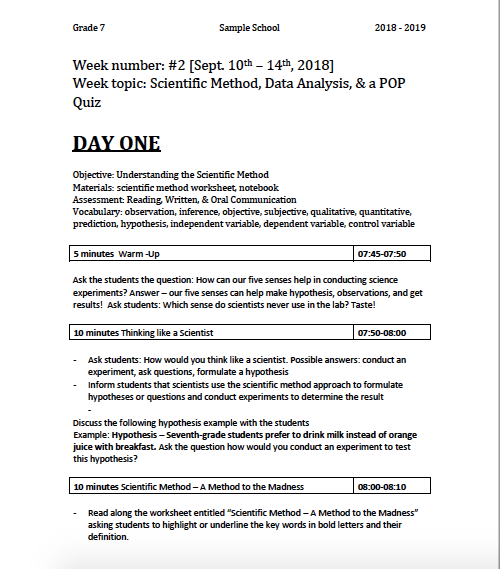
Lesson planning for new teachers just got easier with our lesson planning bundle that includes a variety of lesson plan templates.
Click here to view our lesson planning bundle and get started today!
#1 Lesson Objectives
The lesson objective should be simple and clear to both teachers and students. Curriculum guidelines and exceptions help to make the objectives easier to achieve.
Now to keep interests peeked and energy levels high, the lesson objectives shouldn’t be stated at the beginning of the lesson, but instead demonstrated throughout the lesson.
The objectives are then assessed towards the end of the lesson to check if they have actually been met.

As the teacher goes through the lesson it should be clear to students why this lesson is important.
A sample objective lesson in English would be; students to recognize three main sentence types; simple sentences, compound sentences, and complex sentences.
Find more information related to language development by clicking here.
#2 Vocabulary
The vocabulary emphasized in an English lesson is simple and straightforward, but what about vocabulary for topics in maths and science?
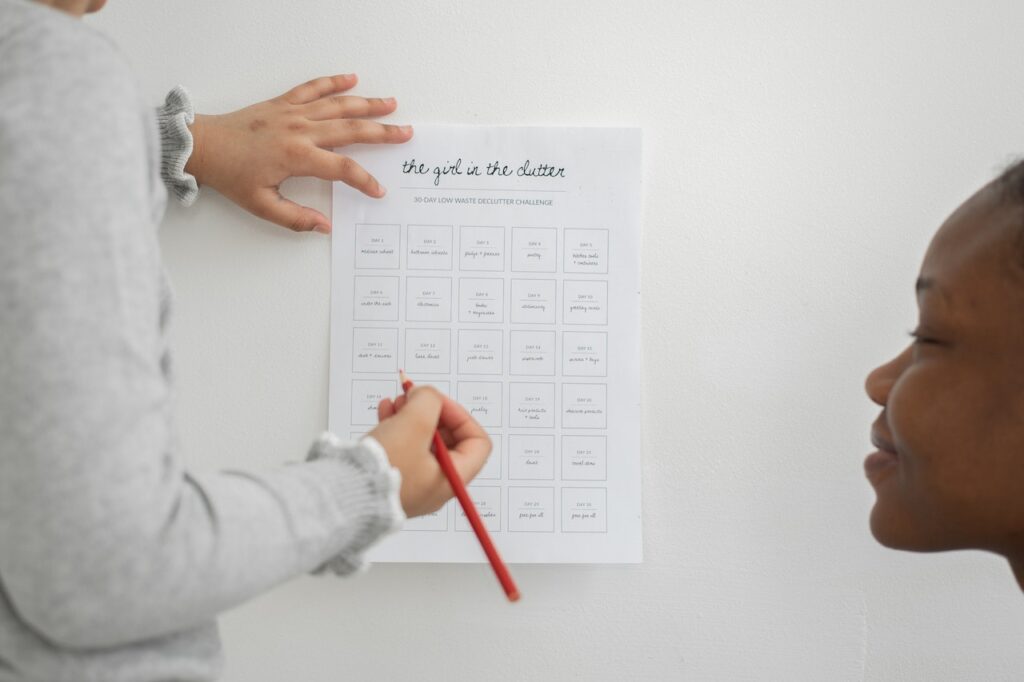
Do teachers emphasize the use of important vocabulary words to help students in communicating their understanding as it relates to the lesson?
When teachers ask students to include the vocabulary highlighted in the lesson, when communicating their answers through speaking or writing, the students see the benefit of connecting these words to how they communicate, which helps understanding.
#3 Assessments
There are two main types of assessments in education; one being formative and the other being summative.
With formative assessments these are ongoing and can range from oral communication in answering questions, observational notes, to checklists, portfolios, and rubrics students are asked to follow when completing assignments.
The main points are that during the course of a unit or chapter, the formative assessments are typically informal and on-going.
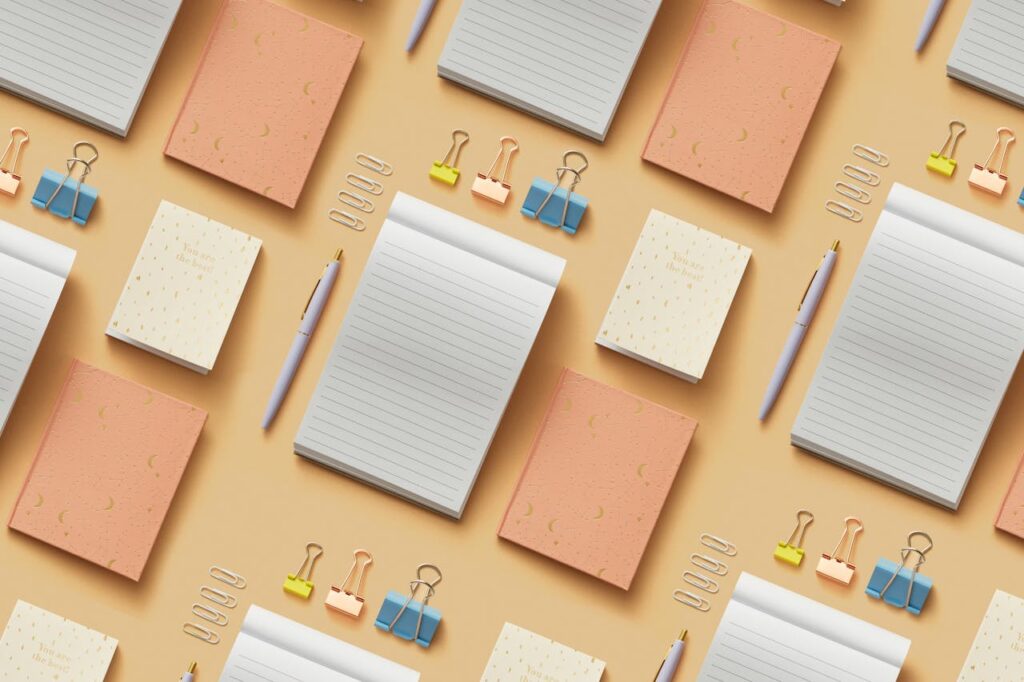
The second type of assessment is more formal and recognized by the students and teacher as indicating a clear end to the chapter or unit such as a project, chapter, or unit test.
Assessments are vital for determining if students have understood the objectives, and how best to help them if they did not seem to understand them the first time.
#4 Participation
The topic of participation can play an important role in improving the energy needed to maintain a high interest in the lesson by the teacher and students.
Students can show their excitement for participating in the lesson by raising their hands in answering questions, preparing to complete the activities, or volunteering to answer questions on the board.
Participation is a form of formative assessment that can help students improve their understanding.
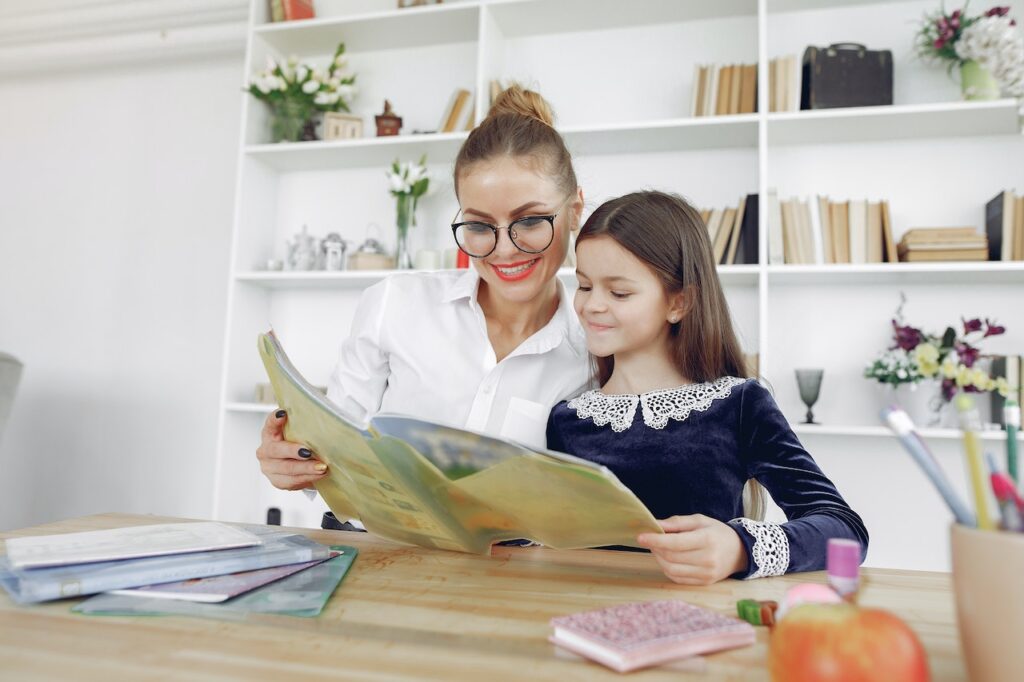
Certain students may shy away from participating in class discussions because of their personality.
This may become a sensitive issue for students if they feel the teacher is not sympathizing with the student.
In this case teachers can set up an understanding with the student as to when to call on them in the class.
#5 Manipulatives
Research in education clearly supports the theory that not all students learn in the same way.
There are different ways in which students prefer to learn. Students may be stronger as visual, or tactile learners, or as combination of such.
Teachers, therefore, often need manipulatives to help with lesson objectives.
Manipulatives are also referred to as visual aids, and can be used for demonstration purposes or for engaging student-centered learning with objects where students can uses their senses to help learn more.

These learning tools help with connecting abstract ideas into concrete ones that students can see, and touch, which benefits students who are more visual or tactile learners.
#6 Time
Time is also crucial for the lesson to run as smoothly as possible, as teachers have students transition from one activity to another.
Allowing one activity to run longer than expected and then rushing through other activities can disrupt the energy flow needed to get through the class. Teachers should not run over time or end the class abruptly, or better yet, let the bell dismiss the students.

One important piece of information to present to students at the beginning of the school year is that there is one class time, but two actual “times” in the class. The first is “teaching time” where the teacher is explaining important information that can’t be ignored. This is not the time students can use to go to the bathroom.
The second is “independent time” where the students are working independent of the teacher and so if they need the bathroom they are free to use it.
#7 Lesson Structure
The structure of the lesson means that there is a clear beginning, middle, and end to the lesson.
The beginning is generally referred to as the warm-up, where at this point the teacher could open the lesson with a thought-provoking question, mind map, or a simple question and answer activity that is related to the main objective of the lesson. The energy level should be rising at this point.

The middle, or main part of the lesson, is where the objectives for the lesson are introduced for the first time, or a review of the objectives as it relates to new objectives. The energy level is being sustained at this level.
The end can also be referred to as the wrap-up, or cool down part of the lesson. The energy level is sustained through out the wrap up, meaning that the students want to participate in finishing up the lesson instead of allowing for a sharp drop in energy levels.
Teaching Math Literacy
Literacy means having the ability to read and write. Math literacy takes the ability to read and write using math vocabulary along with the ability to problem-solve, reason, and analyze information.
In teaching maths lessons and in following the structure of the lesson plan, teachers need to “hook” the students with a thought-provoking question or mind map concerning the topic.
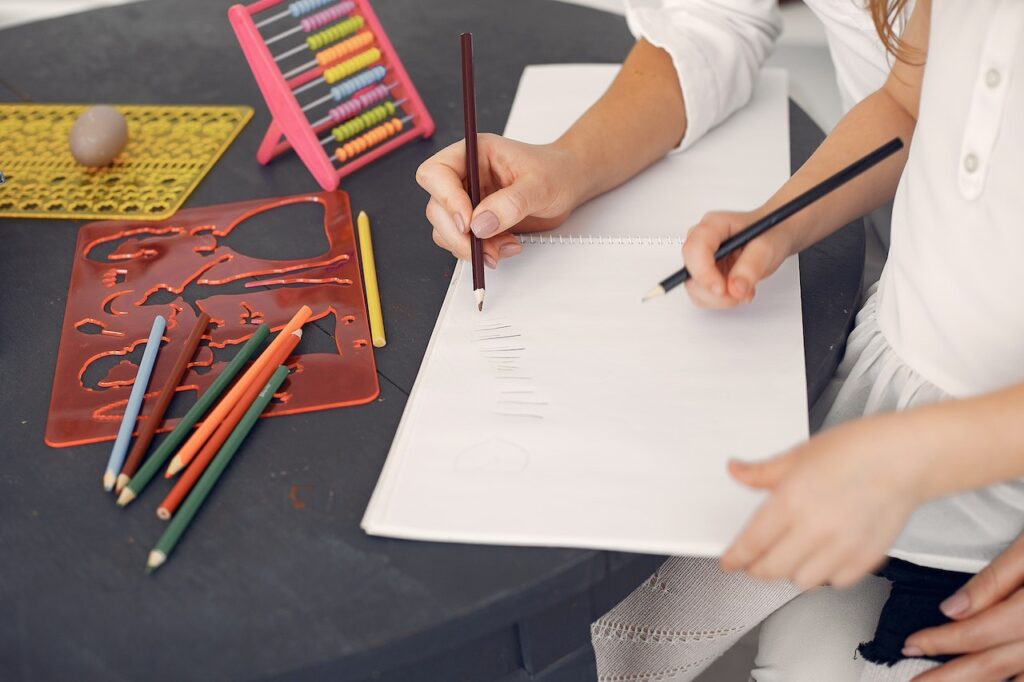
When teachers present the topic in a way that creates different approaches to reaching the same conclusion students will feel more in control of their learning.
With Maths there is more than one way to problem solve, but the process to problem solving stays consistent.
When students are asked to problem solve in Math, there is a 3-step process with problem solving that helps with organizing and communicating the information that makes understanding the concepts easier.
Click here for the 3 step problem solving strategy recommend by EduKitchen.
Teaching Science Literacy Using The Scientific Method
The scientific method is the process by which students problem solve, reason, and analyze topics in science.

The approach to teaching science is similar to Math, students need to be “hooked” in during the warm up with an entertaining introduction to the topic.
Related Topics
Connect to our other pages as you navigate through our website. Explore what these pages have to offer you and you will be glad you did!
- 5 Classroom Management Strategies for Homeschooling
- How to Use Formative Assessments in the Homeschool Classroom
- 5 Important Tips for New Homeschooling Teachers
- The Influence of Parents on Education Policy
- 7 Ways Teachers Connect With Online Learning
Join Our Newsletter Community Today!
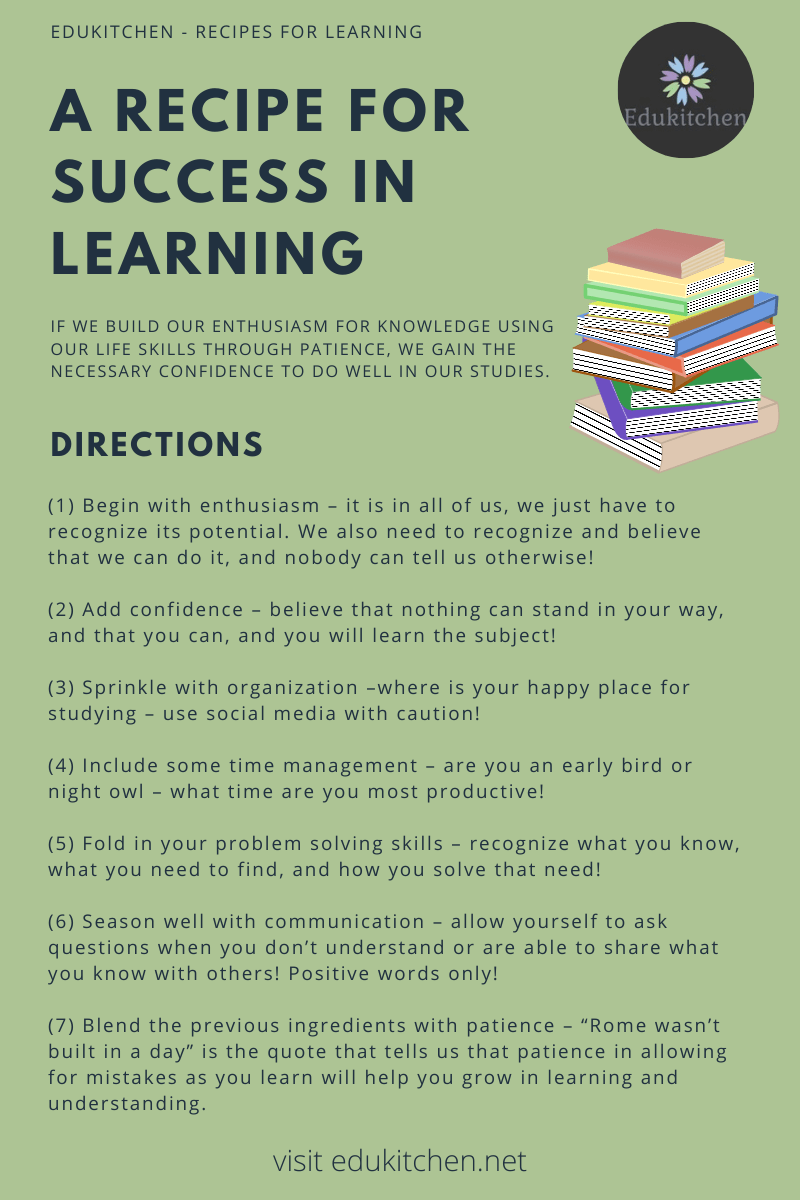
Final Thoughts…
Now as an experienced teacher, I know that there are teacher guide books that teachers can follow that have all the lesson planning done for them.
That is not really the objective of this article.
The objective of this article is to have teachers recognize the potential they have in taking lesson plans written on paper and turn them into energized teaching lessons that students will remember for years to come.
Share Your Thoughts!
We would like to hear from you! Let us hear your thoughts on lesson planning (if you are a teacher) or what was one of your memorable lessons if you are not a teacher in the comments below! Connect with us on social media!



